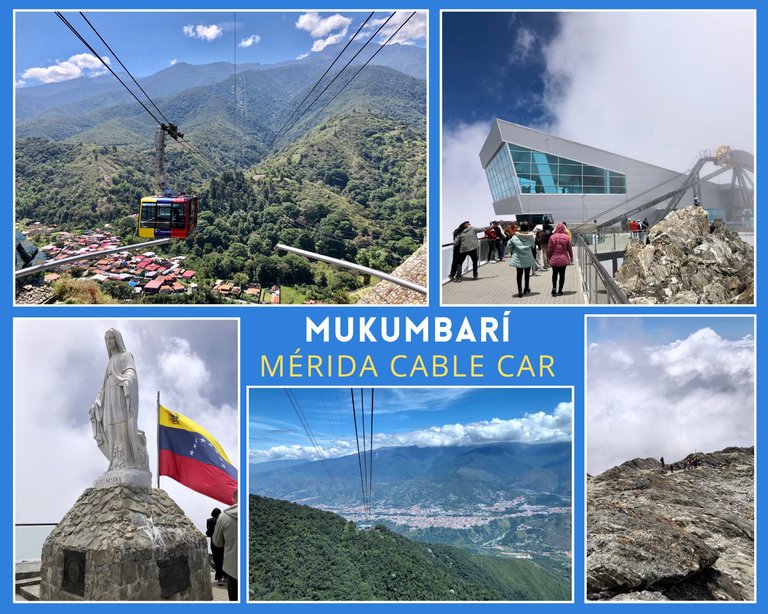
Visiting the Mérida Cable Car was another adventure I had last April when I spent a few days in the state of Merida. I hadn't been on this cable car for a few decades, hehe. In fact, until last April, I had never been on the "new" Merida cable car which is now called Mukumbarí. But before I start my journey, let me tell you some facts about this cable car.
The old Merida Cable Car was inaugurated in the 1960's, it was an incredible work of engineering and at that time it was the longest cable car system in the world and also the highest. Today, it is still the highest in the world. The final station at Pico Espejo is 4,765 meters above sea level. The original system was closed in 2008 after an inspection determined that it was not in good condition to continue operating. After a few years, upgrading and rehabilitation of the entire system, the cable car was reopened in 2016.
The cable car operates in four sections. The departure station located in the city of Merida, is the Barinitas Station.
The day we visited it, we arrived around 9 am, a little before the opening time because we feared that being a holiday there might be a lot of people. However, to our surprise there were not too many people and when they opened the cable car at 10 am we could buy our tickets to start the ascent right away. The general admission for nationals is 20 dollars and for foreigners 40 dollars.
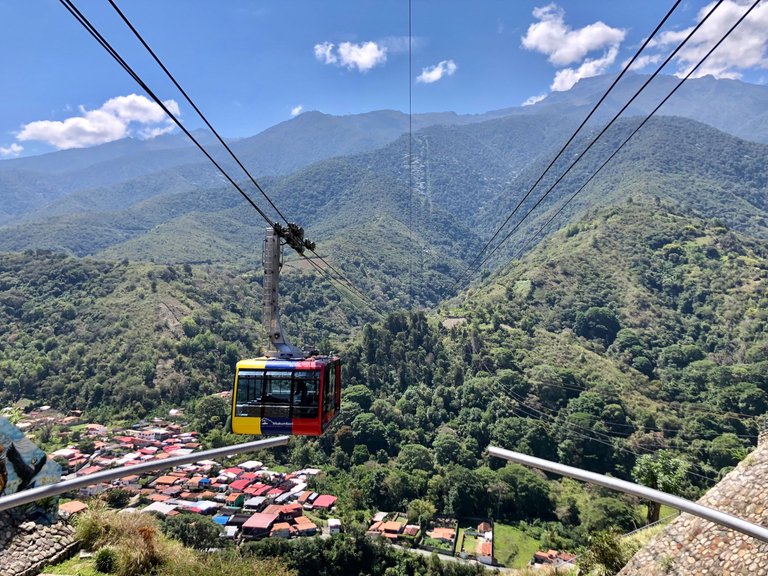
The Ascent
Once in the cable car cabin, we started the ascent to the first station. We were sitting with our eyes looking towards what we were leaving behind, the Barinitas Station. And we began to have views of some houses and constructions in that part of the banks of the Chama River.

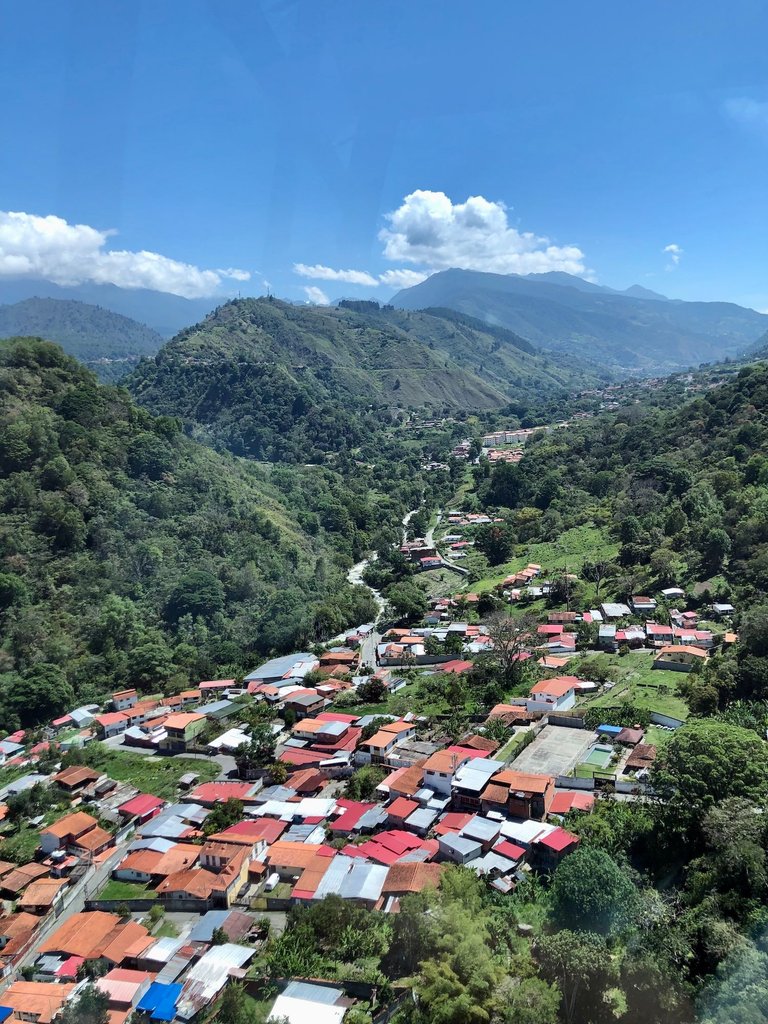
As the cable car ascended we had amazing views of the city of Mérida. It is the capital of the state of the same name.
If we looked to the sides, we could see the mountains and at this point among the vegetation we could see some white trees among the greenery. I remembered them from the times I went to the cable car in my youth, they are popularly called the gray hairs of the mountain and their name is Yagrumos. They are typical of that area of the Andes.

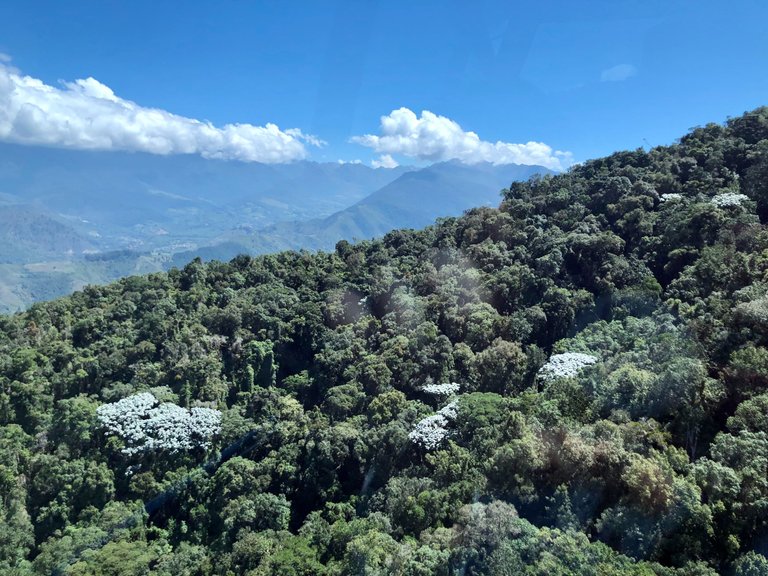
Soon we arrived at the next station, La Montaña. There we changed cabins to travel the next section.

We continued ascending and the city looked more and more distant. At this station, there are places to eat and it is recommended that people traveling with babies stay at this station and do not continue the ascent.
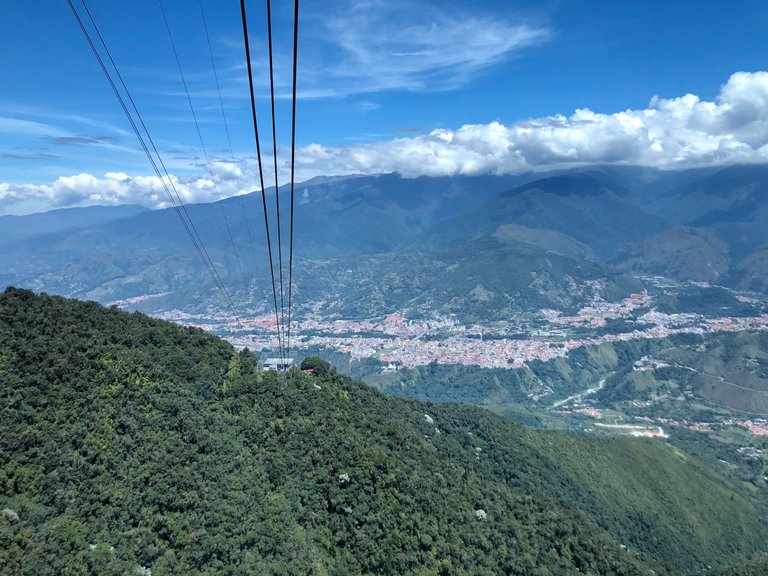
The next station where we changed wagon is called La Aguada and one of the activities you can do there if you decide to stay, it is jump on a zip line. From the cable car we saw a brave guy doing this extreme activity. Would you dare to do it? I wouldn't, haha.
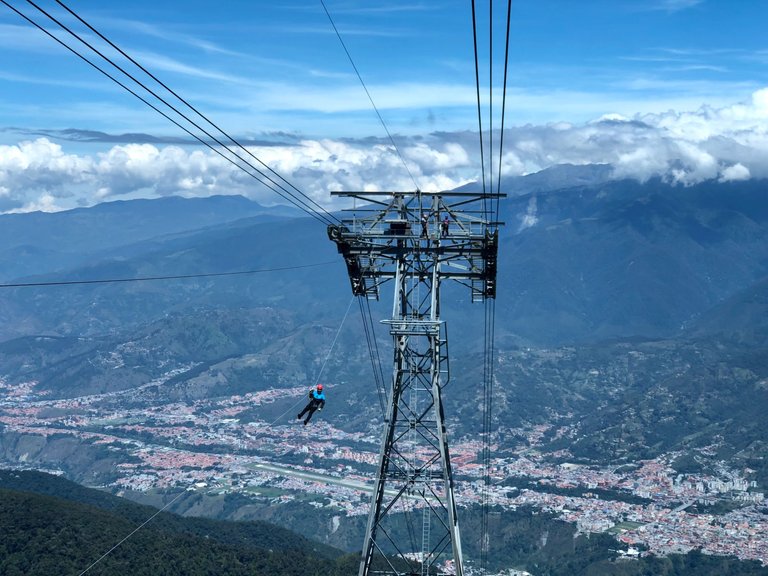
We leave the station behind and continue our ascent in the cable car.

At this point, the mountain scenery had changed and we were clearly in the Páramo. Through the windows of the wagon we could admire the scenery. We saw some trails in the mountain, I wonder where they lead to, it must be a great challenge to walk them, the station of La Aguada is at 3,452 meters of altitude. At this point we have to take it easy so as not to suffer from altitude sickness.


The next station is Loma Redonda which is at 4,058 meters above sea level. At this station you can get close to the lagoon of Los Anteojos, we did it but when we made the descent. First the goal was to get to the last station, so we continued our ascent but from the windows of the wagon we could see the lagoon.

And a few minutes later we were at the Pico Espejo. Here the station is at 4.765 asl. When you arrive and get off the wagon, they give you a few recommendations. That you should stay hydrated, do not overeat, do not run and that the recommended time of stay at the station should not exceed 45 minutes.
Pico Espejo
In this station, as in the others, there are places to have a snack or a drink. My friends wanted hot chocolate, I preferred to just drink water to stay well hydrated. And go out to enjoy the scenery. At this station outside there is a walkway that leads to a statue of the virgin of the snows.
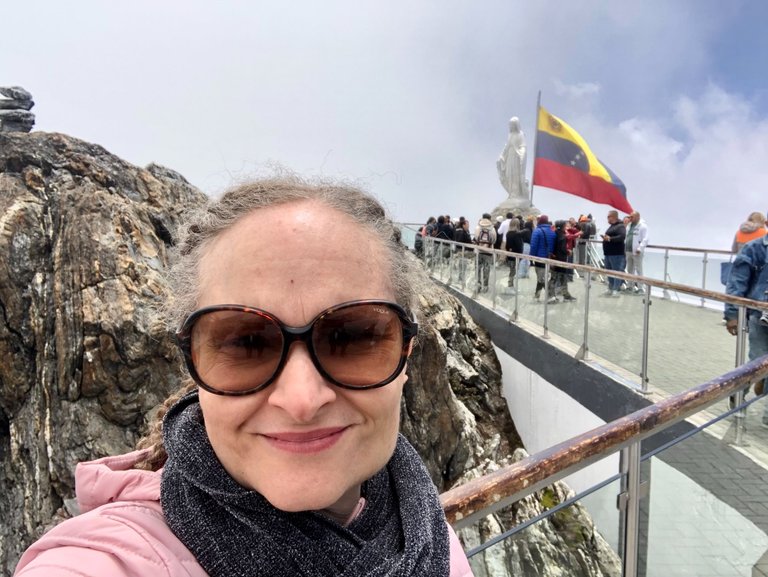
There were many people around the virgin taking pictures.
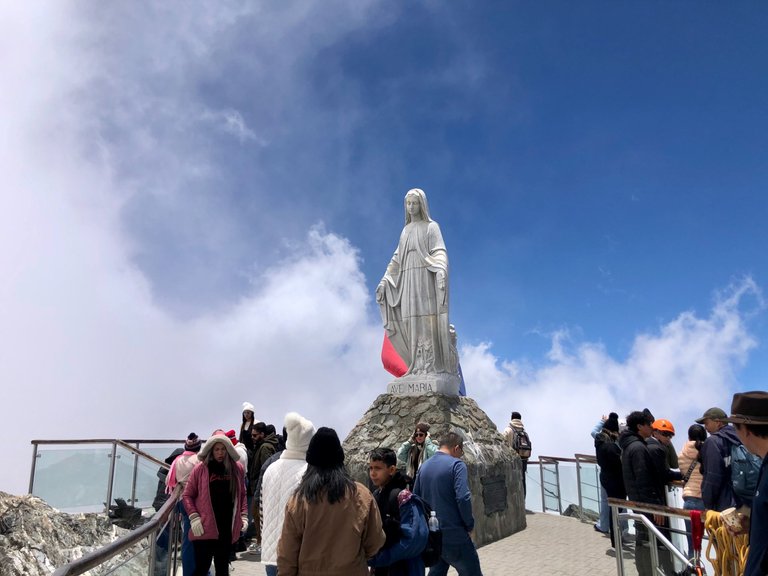
And there was little else to do, unless you took one of the small guided hikes to visit some points on Pico Espejo. This changed on this new cable car as I remembered as a youngster walking on the rocks freely and playing in the snow. At this time, there was no snow and on our visit we were also unable to see Bolivar Peak which can be seen from there when the sky is clear. Bolivar is the highest peak in the country and its summit is 4978 meters above sea level.

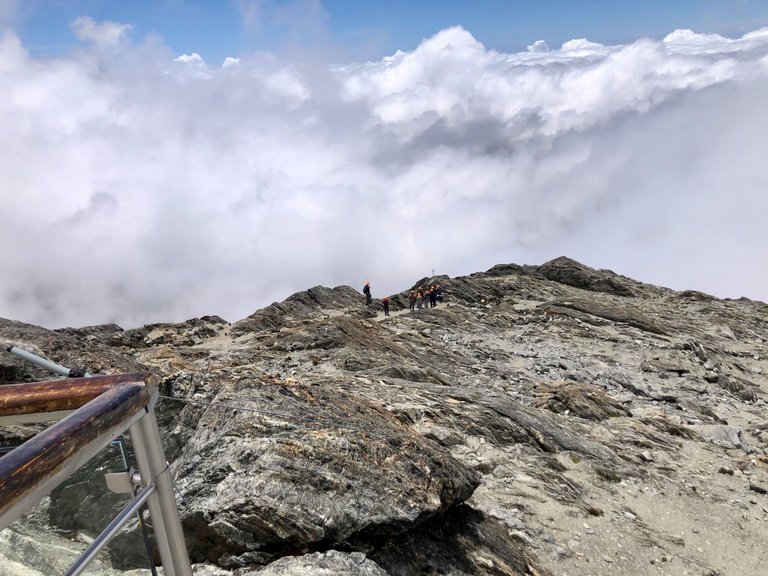
I went to take some pictures of the statue of the virgin. The Virgen de las Nieves is the patron saint of mountaineers. And from what I read this sculpture measures 3.5 meters and the sculptor who made it is called Walter Ribani and is Italian.

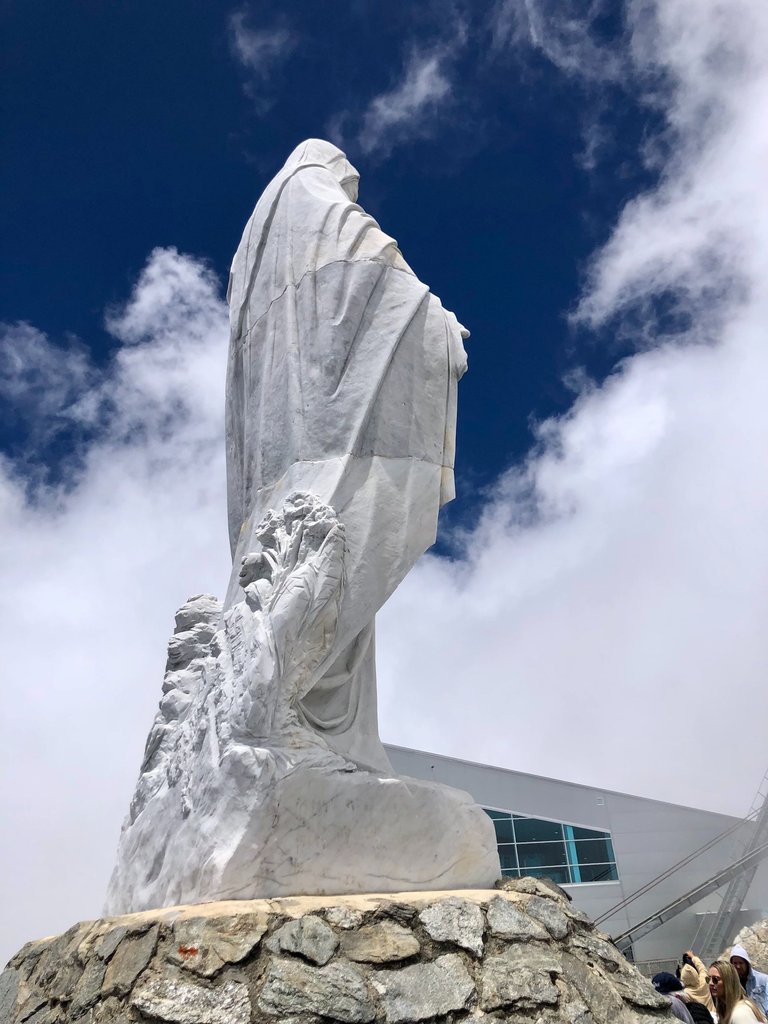
After being there for a while outside the station, we decided it was time to start the descent.
Loma Redonda Station
But as I had anticipated, during the descent, we decided to stop at the station Loma Redonda, to visit the lagoon.
When leaving the station, we found these horses, from there you can do excursions on horseback.
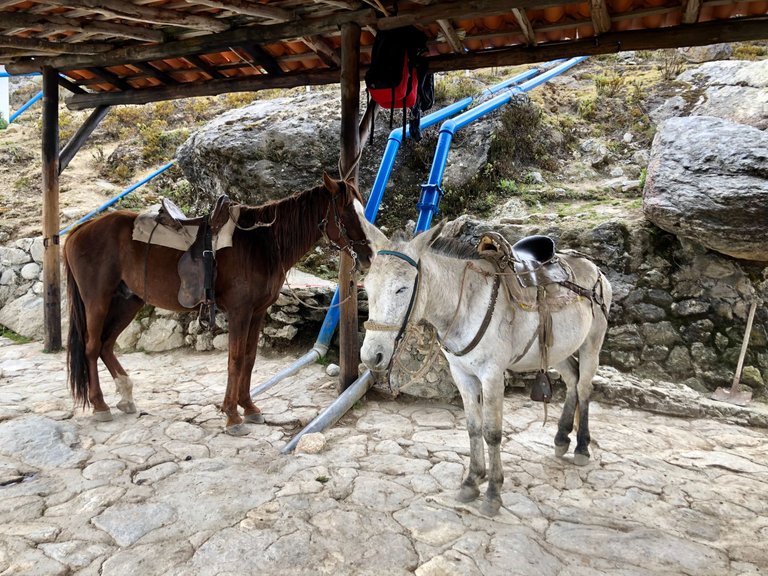
We continue on foot, leaving the station behind.

From the trail, we have views of the lagoon Los Anteojos.
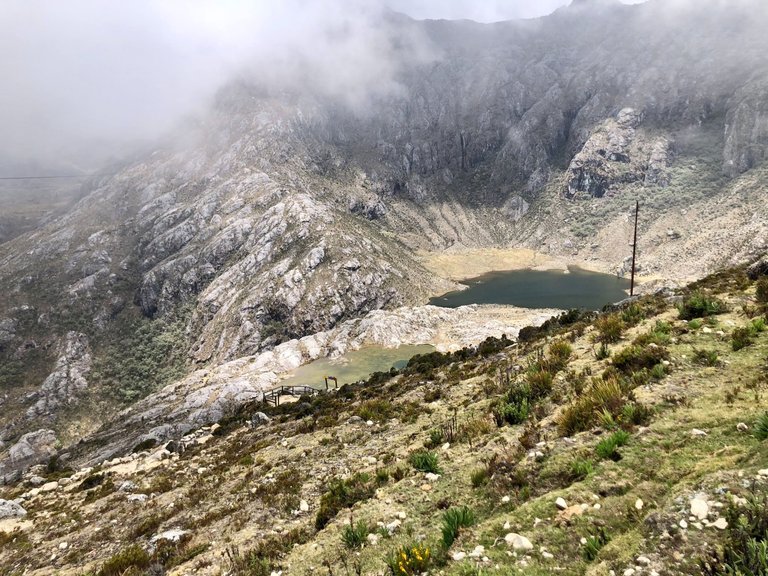
Despite the fact that at this altitude, the predominant vegetation are Frailejones, these little yellow flowers caught my attention. Also while we were walking, we saw one of the cable car load wagons passing by.
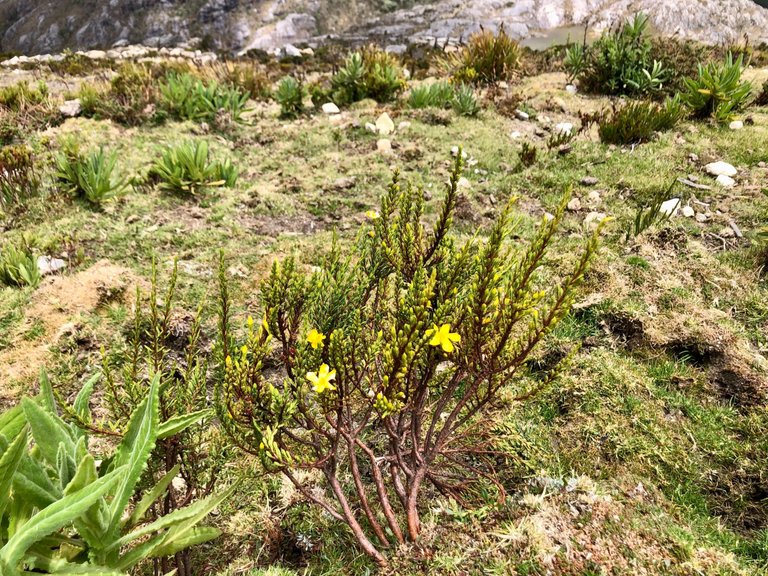

We got a little closer to see the lagoon.
This is as close as we got, the trails leading to the edge of the lagoon were closed, perhaps only accessible on guided tours, I really don't know.
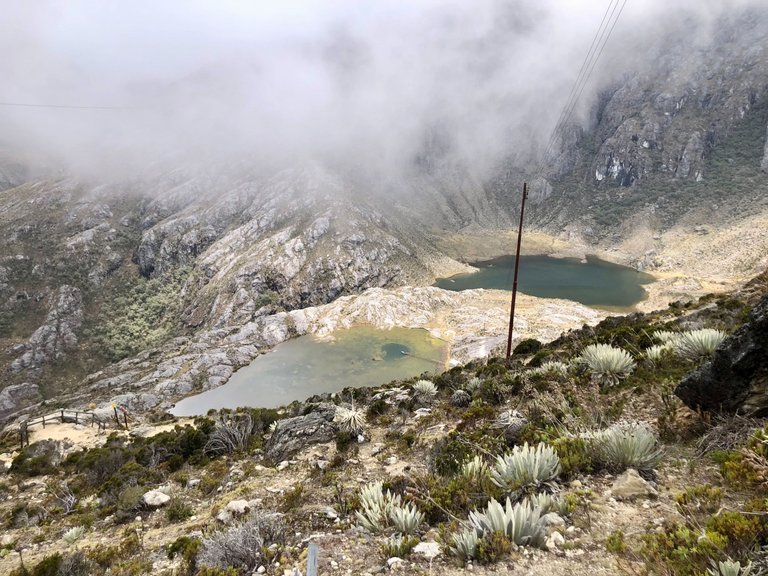
We took some more pictures and returned by the same path walking among frailejones.
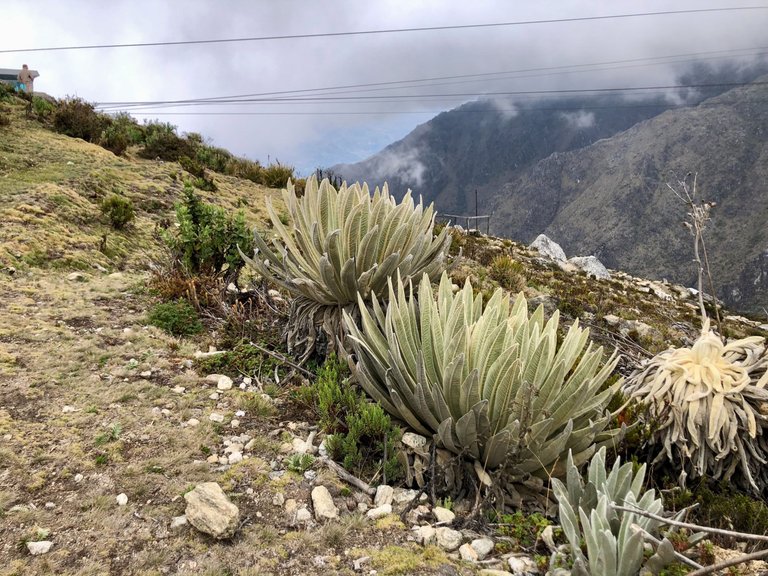
It was time to resume the descent, it was about two in the afternoon and we still had one more adventure planned for that day, but I'll tell you about that another time.
If you ever visit the city of Merida, a visit to the cable car is totally worth it, even if, like us, it's during the non-snowy season.
! [Text In Spanish]
Mukumbari - Teleférico de Mérida, el más alto del mundo
Visitar el Teleférico de Mérida fue otra de las aventuras que viví el pasado abril, cuando visité unos días el estado Mérida. Hacía varias décadas que no subía a este teleférico, jeje. De hecho, hasta el pasado mes de abril, nunca había subido al «nuevo» teleférico de Mérida que ahora se llama Mukumbarí. Pero antes de empezar mi viaje, déjenme que les de algunos datos sobre este teleférico.
El antiguo Teleférico de Mérida fue inaugurado en los años 60s, fue una increíble obra de ingeniería y en ese entonces era el sistema de teleférico mas largo del mundo y también el mas alto. Hoy en día, sigue siendo el mas alto del mundo. La estación final en el Pico Espejo esta a 4.765 mts sobre el nivel del mar. El sistema original fue cerrado en el 2008 tras una inspección que determinó que no estaba en buenas condiciones para seguir operando. Tras unos cuantos años, la actualización y rehabilitación de todo el sistema, el teleférico fue reinaugurado en el 2016.
El día que fuimos llegamos sobre las 9 de la mañana, un poco antes de la hora de apertura porque temíamos que al ser festivo hubiera mucha gente. Sin embargo para nuestra sorpresa, no había demasiada gente y cuando abrieron el teleférico a las 10 de la mañana pudimos comprar nuestros billetes para iniciar el ascenso en seguida. La entrada general para nacionales es de 20 dólares y para extranjeros de 40 dólares.
El Ascenso
Una vez en la cabina del teleférico, iniciamos el ascenso hasta la primera estación. Íbamos sentados con la mirada hacia lo que dejábamos atrás, la Estación Barinitas. Y comenzamos a tener vistas de algunas casas y construcciones en esa parte de la ribera del río Chama.
A medida que ascendía el teleférico tuvimos unas vistas magníficas de la ciudad de Mérida. También conocida como la ciudad de los caballeros, Mérida es la capital del estado del mismo nombre.
Si mirábamos a los lados, podíamos ver las montañas y en este punto entre la vegetación podíamos ver unos árboles blancos entre el verdor. Los recordaba de las veces que fui al teleférico en mi juventud, les dicen popularmente las canas de la montaña y se llaman Yagrumos. Son típicos de esa zona de los Andes.
Pronto llegamos a la siguiente estación, La Montaña. Allí cambiamos de cabina para recorrer el siguiente tramo.
Seguimos ascendiendo y la ciudad se veía cada vez más lejana. En esta estación hay lugares para comer y se recomienda que las personas que viajan con bebés se queden en esta estación y no continúen el ascenso.
La siguiente estación donde cambiamos de vagón se llama La Aguada y una de las actividades que puedes hacer allí si decides quedarte, es tirarte en tirolina. Desde el teleférico vimos a un valiente realizando esta actividad extrema. ¿Te atreverías a hacerlo? Yo no, jaja.
Dejamos atrás la estación y continuamos nuestro ascenso en el teleférico.
En este punto ya el paisaje en la montaña había cambiado y estabamos claramente en el Páramo. Por los ventanales del vagón podíamos admirar el paisaje. Vimos algunos senderos en la montaña, me pregunto a donde llevarán.Debe ser un gran reto recorrerlos, la estación de La Aguada está a 3.452 metros de altitud. En ese punto ya hay que tomarse las cosas con calma para no sufrir mal de altura.
La siguiente estación es Loma Redonda que está a 4.058 metros sobre el nivel del mar. En esta estación puedes acercarte a la laguna de Los Anteojos, nosotros lo hicimos pero cuando hacíamos el descenso. Primero el objetivo era llegar a la última estación, así que continuamos nuestro ascenso pero desde las ventanillas del vagón podíamos ver la laguna.
Y pocos minutos después estábamos en el Pico Espejo. Aquí la estación está a 4.765 msnm. Cuando llegas y te bajas del vagón, te dan unas recomendaciones. Que te mantengas hidratado, que no comas en exceso, que no corras y que el tiempo recomendado de estancia en la estación no supere los 45 minutos.
El Pico Espejo
En esta estación, como en las demás, hay sitios para tomar un snack o una bebida. Mis amigos querían chocolate caliente, yo preferí sólo beber agua para estar bien hidratada. Y salir a disfrutar del paisaje. En esta estación afuera hay una pasarela que lleva a una estatua de la virgen de las nieves.
Había mucha gente alrededor de la virgen tomándose fotos.
Y había poco más que hacer, a no ser que hicieras una de las pequeñas excursiones guiadas para visitar algunos puntos del Pico Espejo. Esto cambió con este nuevo teleférico, ya que recordaba cuando era joven haber caminado libremente por las rocas y jugar en la nieve. En esta ocasión, no había nieve y en nuestra visita tampoco pudimos ver el Pico Bolívar que se puede ver desde allí cuando el cielo está despejado. Bolívar es el pico más alto del país y su cumbre está a 4978 metros sobre el nivel del mar.
Tomé algunas fotos cercanas de la estatua de la virgen. La Virgen de las Nieves es la patrona de los montañeros. Y por lo que leí esta escultura mide 3,5 metros y el escultor que la hizo se llama Walter Ribani y es italiano.
Después de estar un rato allí fuera de la estación, decidimos que era hora de iniciar el descenso.
Estación Loma Redonda
Pero como les había adelantado, durante el descenso, decidimos detenernos en la estación Loma Redonda, para visitar la laguna.
Al salir de la estación, nos encontramos estos caballos, desde allí se pueden hacer excursiones a caballo.
Nosotros continuamos a pie, dejando atrás la estación.
Desde el sendero ya se tienen vistas de la laguna Los Anteojos.
A pesar de que a esta altura lo que predomina en la vegetación son los Frailejones, me llamaron la atención estas florecitas amarillas. También mientras caminábamos vimos pasar uno de los vagones de carga del teleférico.
Nos acercamos un poco mas a ver la laguna. Esto es todo lo cerca que llegamos, los senderos que llevaban hasta el borde la laguna estaban cerrados, tal vez solo se puede acceder en excursiones con guía, la verdad no lo sé.
Hicimos algunas fotos y regresamos por el mismo sendero caminando entre frailejones.
Ya era hora de retomar el descenso, eran como las dos de la tarde y todavía teníamos una aventura más planeada para ese día, pero eso se los cuento en otra ocasión.
Si alguna vez visitas la ciudad de Mérida, la visita al teleférico vale totalmente la pena, incluso si como a nosotros te toca en época donde no hay nieve.
Gracias por leer!
Thank you for reading.
If you're reading this and you are not on Hive yet, I invite you to join through my referral link. Let me know and I can delegate some resource credit to help you get started.


